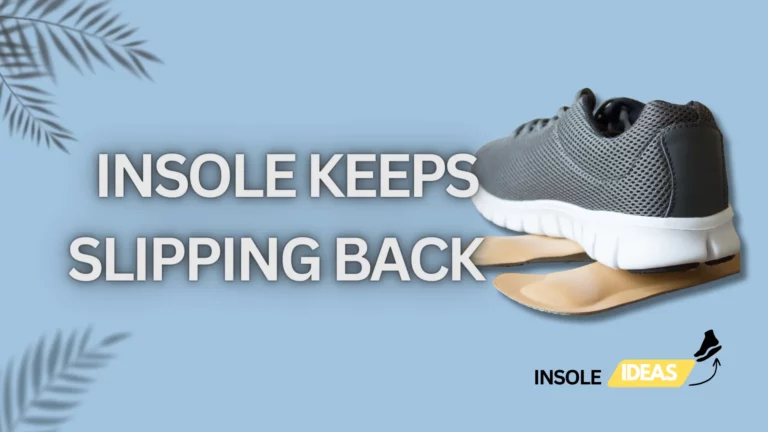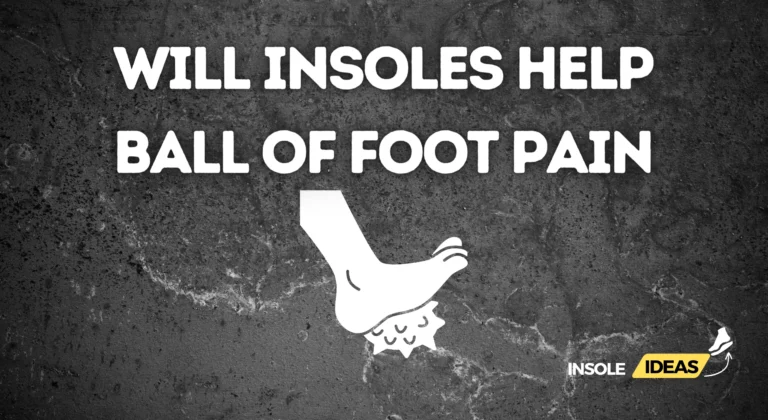Importance of Comfort in Insoles
Comfort stands as the cornerstone of effective insoles, directly impacting overall foot health and daily activities. It’s not merely about providing a soft cushion for the feet; it encompasses several crucial aspects.
Comfortable insoles significantly influence how individuals move, stand, and carry out their routines. They mitigate the stress on feet caused by prolonged standing or walking, reducing the likelihood of foot fatigue, pain, or potential injuries. Moreover, they contribute to proper posture and alignment, affecting the entire body’s biomechanics beyond just the feet.
Factors Affecting Insole Comfort
Material Composition
The materials used in insoles dictate their comfort levels. Memory foam, gel, cork, or specialized fabrics offer different levels of cushioning, support, and breathability. Understanding these materials helps in choosing insoles that align with individual comfort preferences and foot conditions.
Thickness and Cushioning
The thickness and density of insoles determine their ability to absorb shock and provide adequate support. While thicker insoles might offer more cushioning, they might not fit into all types of shoes, requiring consideration for different footwear styles.
Arch Support
Insoles with varying levels of arch support cater to different foot arch types—high, neutral, or flat. Proper arch support not only enhances comfort but also aids in distributing body weight evenly, reducing strain on specific areas of the foot.
Breathability and Moisture-Wicking
Breathable insole materials and moisture-wicking properties ensure a comfortable environment for the feet by minimizing sweat and moisture accumulation. This feature prevents odor, microbial growth, and discomfort caused by dampness.
Size and Fit
Insoles should fit the shoe size and shape accurately. Ill-fitting insoles can cause discomfort, blisters, or exacerbate foot issues. Ensuring the insoles match the shoe size and offer a snug fit is crucial for optimal comfort.
Benefits of Comfortable Insoles
Comfortable insoles offer numerous advantages beyond just cushioning the feet. Their benefits extend to overall foot health and daily comfort.
Enhanced Foot Support
Properly designed insoles provide enhanced support to the feet, aiding in shock absorption and cushioning. By evenly distributing pressure across the foot, they alleviate strain on specific areas, such as the heels or arches. This support can reduce fatigue and discomfort, especially during extended periods of standing or walking.
Alleviation of Discomfort and Pain
Comfortable insoles are pivotal in relieving various foot-related discomforts and pains. They can mitigate the impact of conditions like plantar fasciitis, heel spurs, or flat feet by providing tailored support to the affected areas. By offering cushioning and stability, these insoles minimize pain and discomfort, allowing for greater mobility and reduced strain.
Improved Posture and Alignment
Insoles that prioritize comfort often contribute to improved posture and foot alignment. They assist in more evenly distributing body weight, which helps to straighten the body and lessens strain on the knees, ankles, and feet. Correct alignment can prevent issues like overpronation or supination, promoting a more natural and healthy gait.
Impact on Overall Foot Health
The use of comfortable insoles can significantly impact overall foot health. Beyond immediate comfort, these insoles can prevent or slow down the progression of foot-related problems. By supporting the arches, cushioning impact points, and promoting proper alignment, they contribute to long-term foot health, perhaps lowering the chance of chronic illnesses or injuries.
Types of Comfortable Insoles
Comfortable insoles come in various types, each designed to address specific needs and preferences for comfort and support.
Memory Foam Insoles
Memory foam insoles provide customized cushioning and support by molding to the curve of the foot. They adapt to the foot’s unique contours, offering a snug fit and even distribution of pressure. This type of insole is favored for its ability to alleviate pressure points and enhance overall comfort.
Gel Insoles
Gel insoles incorporate gel pads or inserts that offer excellent shock absorption and cushioning. These insoles are effective in reducing impact on the feet, making them appropriate for people who participate in high-impact activities or stand for extended periods of time on their feet. Gel insoles often provide targeted support and relief to specific areas, such as the heels or forefoot.
Orthotic Insoles
Orthotic insoles are medically designed to provide customized support based on individual foot conditions or biomechanical issues. They offer tailored support to address problems like flat feet, high arches, or overpronation. Orthotic insoles aim to correct foot alignment and enhance overall comfort by providing stability and proper weight distribution.
Custom-Made Insoles
Custom-made insoles are crafted based on precise measurements of an individual’s feet. These insoles are often recommended for individuals with unique foot shapes, sizes, or specific medical conditions. They offer a high level of comfort and support, addressing individual foot irregularities more accurately than off-the-shelf options.
Tips for Finding Comfortable Insoles
Choosing the right insoles involves considering individual preferences, foot conditions, and specific needs. Here are some valuable tips for finding insoles that prioritize comfort:
Assessing Individual Foot Conditions
Understanding your foot structure, whether you have high arches, flat feet, or specific pressure points, is crucial. Consultation with a podiatrist or foot specialist can provide insights into your unique foot conditions, guiding you toward insoles that offer the appropriate support.
Trying Different Types and Brands
Experimenting with various types and brands of insoles allows you to assess their comfort levels firsthand. Some stores offer fitting or trial periods, enabling you to test the insoles in your everyday activities before making a purchase decision.
Seeking Professional Advice
Consulting a healthcare professional or a certified shoe fitter can provide personalized recommendations. These experts can offer insights based on your foot condition, gait analysis, and lifestyle, suggesting the most suitable insoles for your needs.
Maintenance and Longevity of Comfortable Insoles
Proper care and maintenance of insoles are essential for ensuring their longevity and continued comfort.
Cleaning and Care Tips
Regular cleaning helps preserve the effectiveness and hygiene of insoles. Depending on the material, insoles can be cleaned with mild soap and water, and some may be machine washable. Air-drying thoroughly before reuse is advisable to prevent odors and bacterial growth.
Lifespan of Different Insole Materials
Understanding the durability of various insole materials is crucial. Memory foam might wear out faster compared to gel or orthotic insoles. Knowing the expected lifespan of your insoles helps in planning for replacements and maintaining comfort.
Final Recommendations for Choosing Comfortable Insoles
When selecting insoles, prioritize comfort, support, and suitability for your specific foot conditions. Consider materials, types, and user reviews to make an informed choice. Regular maintenance and timely replacements ensure consistent comfort and foot health.





